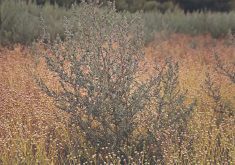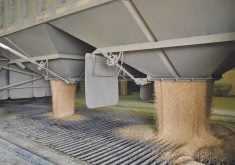I wanted to call them elephants in the room, but that term applies to big issues no one wants to discuss. In this case, farmers are more than willing to discuss and even obsess about them. The agricultural input industry, on the other hand, would rather steer conversations in other directions.
Big concern No. 1 is the lack of soil moisture. A bit of snow and a blast of cold temperatures have arrived, but it will take a lot of snow and a lot of rain next growing season to make up for the accumulated deficit.
Read Also

High prices see cow-calf producers rushing to incorporate
Farm accountants are reporting a steady stream of cow-calf producers rushing to get their operations incorporated ahead of selling their calves this fall.
A green/brown Christmas came on the heels of much warmer than normal temperatures in November and December. Without snow cover and with many areas seeing temperatures frequently above freezing, how much soil moisture did we lose?
This isn’t the high precipitation season, but the possibility of another dry year weighs heavily on the regions that have suffered successive drought years. With apologies to the various meteorologists, long-range weather forecasts continue to be unreliable. All that’s certain is the dryness that currently covers most of Western Canada. Flip a coin on what the future holds.
Big concern No.2 is the dramatic drop in grain prices, a decline most obvious with canola. Rather than $800 a tonne canola. we’re watching prices dip below $600. Grain market analysts missed the boat, putting them in a similar reliability category as meteorologists.
Rather than a crop insurance price of $18 to $19 a bushel like we had in 2023, the insured price for 2024 will likely be set around $14 and will provide significantly less protection.
Spring wheat prices are down $80 to $100 a tonne year over year with current price quotes for No. 1 CWRS less than $9 a bushel.
On durum, the drought in western Saskatchewan and southern Alberta caused prices to rise in late summer, but prices came back down in the last few months of the year following unexpectedly large durum exports from Turkey. Durum is currently a bit higher than $12 a bushel, somewhat lower than last year at this time.
However, the durum price premium over spring wheat is significant, and you’d expect durum acreage to increase at the expense of both spring wheat and barley.
Feed barley saw a major price slide through the summer. China resumed barley purchases from Australia, cutting into Canadian exports.
On top of that, American corn flowed into Western Canada, cutting into the domestic market. The year-over-year slide in feed barley prices is about $100 a tonne. Depending upon location, feed barley in Saskatchewan is currently around $5.50 a bushel.
About the only bright spot in the grain complex is lentils. At around 36 cents a pound, red lentils are a couple cents better than a year ago. Large green lentils have improved dramatically, going from around 50 cents a pound a year ago to around 70 cents. New crop contracts for large greens are available at around 50 cents a lb.
With dry conditions generating questions about production potential and with a significant drop in most grain prices, returns could take a hit. On the plus side, interest rates are expected to subside a bit and fertilizer prices aren’t crazy high.
Big concern No. 3 is equipment prices. If you’re trading up or even fixing what you have, the cost has escalated dramatically. Given concerns No.1 and No. 2, farmers are likely to deal with concern No. 3 by delaying equipment upgrades.
Kevin Hursh is an agricultural journalist, consultant and farmer. He can be reached by e-mail at kevin@hursh.ca.
















